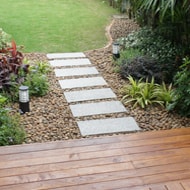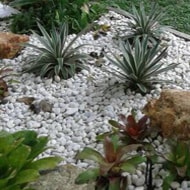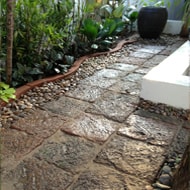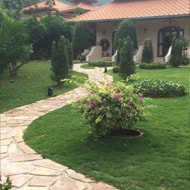
 These bonsai trees (left) were donated to a local temple. Each is over 100 years old and they are worth hundreds of pounds.
These bonsai trees (left) were donated to a local temple. Each is over 100 years old and they are worth hundreds of pounds.
The popular Thai technique of mai dat (clipping the leaves of Thai trees) often look similar in result to the Japanese bonsai style, especially when the Thai versions are potted (Japanese bonsai are always potted).
However, the two styles are very different. The Japanese bonsai tree aims to look like exact miniature replicas of larger trees (in shape), whereas the Thai mai dat style trees are often planted as part of a landscape (not in pots) and are nearly always displayed in more angular and abstract shapes, similar to Thai floral arrangements. The Thai style is also practiced on much larger trees than the bonsai.
Whereas Japanese bonsai seek to imitate nature, the Thai mai dat style seeks to recreate rather than be a direct imitation of nature.
 (Picture above: Thai 'tagor' trees planted as part of a landscape, and often mistaken for the Japanese bonsai tree).
(Picture above: Thai 'tagor' trees planted as part of a landscape, and often mistaken for the Japanese bonsai tree).









Those are so cool looking!
those are some beautiful trees
I love bonsais! I have to admit, though, that I am more familiar with the Japanese technique of making them. Your enumeration of the differences between Thai and Japanese bonsais is very enlightening. It also got me interested to learning more about them. 🙂